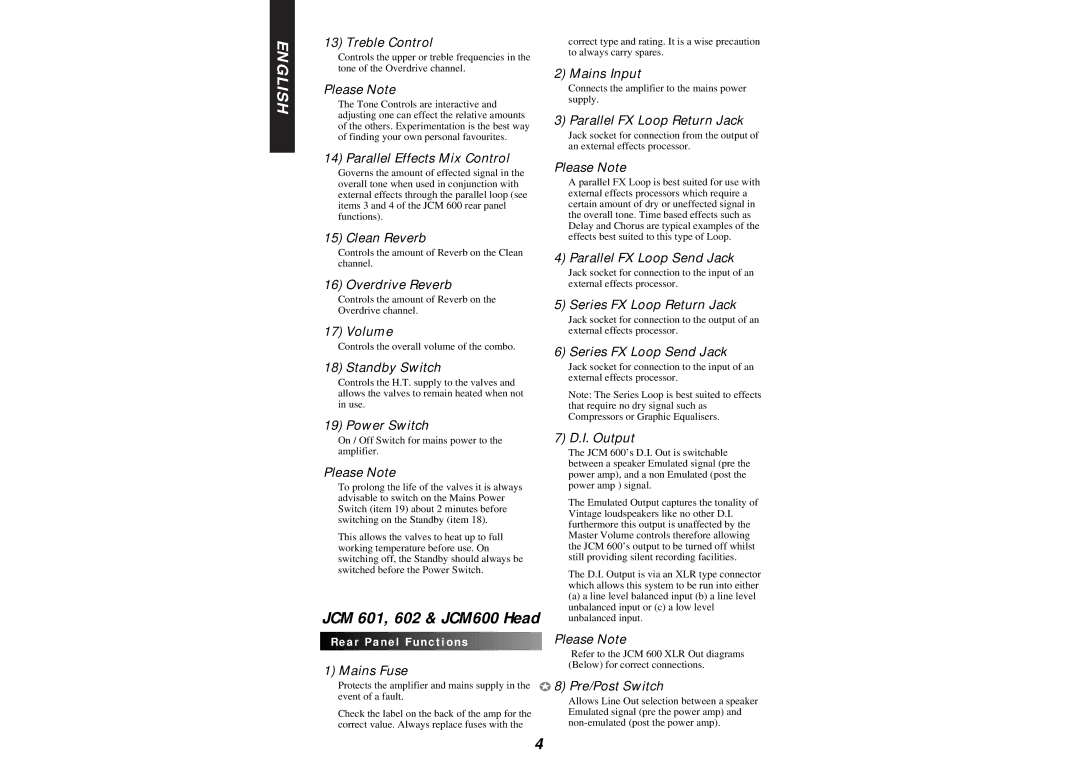JCM600 specifications
Marshall Amplification is renowned in the world of music for producing iconic amplifiers that have shaped the sound of rock and roll for decades. One of their standout models is the JCM600, which combines modern technology with classic Marshall tones.The JCM600 is a versatile tube amplifier designed for guitarists seeking a powerful performance with a variety of tonal options. This amp utilizes Marshall's renowned EL34 power tubes, delivering that signature warm, rich sound that the brand is famous for. With its robust construction and thoughtful engineering, the JCM600 can handle the demands of both studio and live performances.
One of the key features of the JCM600 is its dual-channel design. This allows musicians to switch between clean and overdriven sounds seamlessly. The clean channel maintains clarity and definition, making it ideal for chords and intricate playing. In contrast, the overdrive channel offers a rich, saturated tone that can be adjusted for everything from classic rock rhythms to higher gain sounds that suit heavier genres.
The amplifier includes a range of tonal shaping options. The presence and resonance controls allow players to fine-tune the high and low frequencies, respectively. Additionally, the JCM600 is designed with a three-band EQ—bass, middle, and treble—enabling musicians to sculpt their tone to perfection. This level of control makes it a favorite among guitarists who are particular about their sound.
The JCM600 also integrates modern technology with features such as a built-in digital reverb, adding depth to the overall tone. This reverb can be adjusted to suit the player's preference, whether they desire a subtle ambiance or a more pronounced effect.
Moreover, the amplifier is built with durability in mind, featuring a rugged chassis and high-quality components meant to endure the rigors of touring musicians. The cooling system is engineered to prevent overheating, ensuring reliable performance in even the most demanding environments.
In essence, the Marshall JCM600 encapsulates what guitarists have come to expect from the brand: powerful performance, incredible tonal versatility, and robust durability. Whether on stage or in the studio, this amplifier ensures that musicians can express their creativity and achieve their desired sound with ease.

